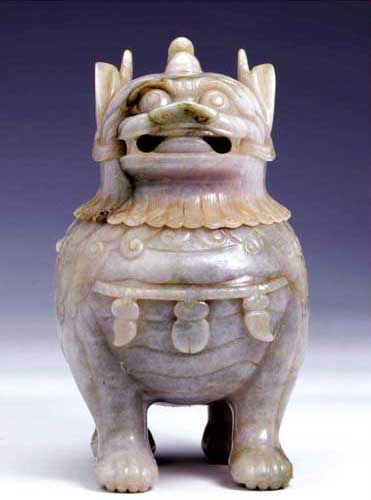In the Yuan Dynasty, due to the influence of ethnic Han, Tibetan people were familiar with the concept that "gold could be priced, but jade is priceless". Jade culture was very popular and admired by people of all classes. Workshops to produce and mill jade articles for the court grew to an unprecedented size and handcraft industries run by governments developed rapidly. Jade articles produced during that period became most important and most exquisite objects for government gifts.

Agate incense burning in Tibet Museum
Jade article production, on the whole, inherited an advanced technique and fine aesthetic qualities passed down by generations. While featuring superb designs, wide variety in shape, appearance and styles, jade culture continued to develop throughout both Tang and Shong Dynasties. This could be observed through jade ornaments, domestic utensils, and decorative articles which had actually become the mainstreams of jade culture since Tang and Shong Dynasties.
Gradually, categories of jade articles tended to grow more secular and populist over time. The themes of jade objects with carved line patterns were mainly of auspicious signs and good luck charms. Artisans adopted a carving style that was mellow and full but bold and unconstrained. During this period, jade carving technique had undergone a new development through adopting a technique of outshoot engraving and producing a deep hollow carving such as for jade snuff bottles. This was called the "Qiaose" technique.
The Yuan Dynasty lasted from 1271 to 1368. When Tibet was just incorporated into the territory of China in the Yuan Dynasty, the political relationship between the central government and local Tibetan government stood out as more significant than economic and cultural relations.
